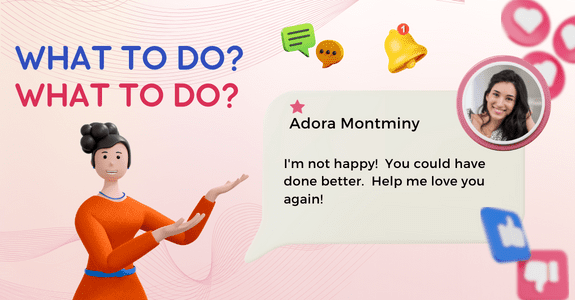A Step-By-Step Guide to Developing Your Social Media Content Strategy
Social media can be an enjoyable pastime for some, but it’s a whole different ball game when it comes to marketing your business. To see results from your efforts, you’ll need to plan and strategize carefully. Creating a social media content plan will help you develop targeted content, stay consistent with posts, and gain tangible returns on investment. Here’s a step-by-step guide to creating your social media content strategy.
Why should you take the time to create a social media content plan?
Creating a social media content plan is essential for developing relevant topics and engaging content. Taking the time to plan your topics in advance will ensure you are delivering material that resonates with your audience. Scheduling posts helps to create a regular cadence that both audiences and algorithms can rely on. Utilizing in-app analytics gives you the ability to analyze post performance and come up with new ideas or repurpose content that is already successful. A content plan empowers you to combine timely posts with evergreen content, anticipate future events, store digital assets, and monitor relevant hashtags. Investing in a social media content plan will ultimately lead to greater visibility for your brand.
How to Create a Social Content Calendar
A social content calendar is an essential tool for managing and scheduling a social media presence. It helps you organize upcoming posts, campaigns, and creative assets by platform and date.
When creating your calendar, make sure to include the platforms where you’ll be posting, the date and time of publication, and any relevant assets like images, links, captions, videos, or hashtags.
Your calendar can take the form of a Google Sheet, an online planner, or content marketing software – whichever works best for you. The goal is to have a system that helps you organize and plan your posts easily so they always go live on time.
By using a social content calendar, you can ensure your social media presence and campaigns are well-organized, consistent, and engaging.
How to Create Your Social Media Content Plan
Creating a social media content plan doesn’t have to be complicated. Depending on the amount of content you wish to publish and the number of accounts, it can vary in complexity. Here are some easy steps to help you get started with your own social media content plan:
- Take inventory of all the existing accounts
The first step in creating a social media content plan is to take inventory of all the existing accounts associated with your brand. This includes active profiles, inactive or imposter profiles, account usernames and/or email addresses, passwords, business versus personal profiles, target audiences for each profile, who manages the profile (e.g. you, a team member, a marketing agency, etc.) and any outdated information that needs to be updated.
Creating a spreadsheet to track all of this will ensure none of the important details are missed. During this process, you may find that some of the accounts have become obsolete or their login credentials need updating. If so, now is the time to delete the old accounts, recover your passwords and update any outdated information. You may also need to create new profiles if needed.
Once you have identified all the social media sites associated with your brand, it’s time to add them to your posting schedule. This way you can easily keep track of which accounts require management and ensure that all content is updated and relevant.
- Use a content plan template or tool to improve your efficiency and productivity
Organizing your social media content calendar is much simpler when you have a template or tool at hand. Using something like Google Sheets can be a great way to keep track of topics, publish dates, assets, and more. You can find many free templates online, or create one of your own.
There are also a variety of social media planning and scheduling tools available, some of which are free while others require a paid subscription. Popular tools include Buffer, Hootsuite, Sprout Social, Loomly, and Zoho. It’s important to try out different trials to see what works best for you and your team before making a decision. Consider features that are specific to your business and look for tools that allow you to easily create, schedule, and publish content.
- Creating A Content Matrix
Creating a content matrix is the next step in forming a well-defined social media strategy.
Whether you opt for a spreadsheet or software, your content matrix should include the types of content you plan to post on which platforms at what times. Coming up with engaging ideas for content is key to success on social media.
Two models can help you get started: the 80-20 principle and the rule of thirds.
- The 80-20 Principle suggests that 80% of your content should be to inform, educate or entertain, while 20% should be promotional. Examples of the former may include how-to articles, helpful infographics, tutorials, educational videos, funny memes and photos. The latter may include promotions, sales graphics and discount codes.
- The Rule of Thirds designates that one-third of your content should promote your business, one-third be from other industry thought leaders and publishers, and the final third be entertaining content designed to encourage interaction with followers. This will help you create a mix of content types while building trust with your audience. Get creative with topics that speak to the interests of your followers and get them engaging with your brand.
- Set a content schedule and stick to it
Once you have a selection of content topics and ideas, it’s time to plan them into your content calendar. If using a spreadsheet, make sure to include the following: Platform (e.g. Facebook), Profile (e.g. Facebook.com/happyseoagency), Publish Date, Governance (the member posting the content), Time (including time zone), Copy (e.g. Instagram caption and hashtags) and Visuals (photo, video, meme, infographic or gif).
The best times to post content on social media overall are Tuesdays to Thursdays at 9am or 10am but this can vary depending on your audience’s activity and your niche. As you progress with your strategy, keep an eye on analytics to see when people view and interact with your content, and then adjust the time of posting accordingly.
If using a social media planning tool, take advantage of scheduling posts automatically for each platform and monitor performance at the same time. This will make managing your content easier in the long run.
- Keep an Eye on Your Social Media Statistics
Monitoring your social media data is essential for optimizing and refining your content strategy. Keeping tabs on likes, clicks, comments, shares, brand mentions, profile visits, followers, reach, impressions, traffic and leads will provide valuable insight into what content resonates with your audience and drives conversions. Knowing what works best when posting can help you refine your strategy for maximum success. Track your data to gain an understanding of the types of content, times and formats that are most effective in engaging and converting your followers. With this knowledge, you can make informed decisions about your social media content plan and ensure it is successful.
- Know Your Listeners
Listening to your audience is an important part of creating a successful social media content plan. Analyzing your analytics can provide useful information on what types of content resonates best with your followers, but it’s also beneficial to ask them directly what they would like to see. Consider asking questions such as:
- “What topics do you want us to post more about?”
- “What questions do you have for our team/brand?”
- “What’s a trending topic that interests you right now?”
This way, you not only get direct feedback on what to include in your content plan but can also use their insights to refine and improve it. Listening to your audience also helps ensure that your social media efforts remain engaging and relevant. To maximize your content plan’s effectiveness, make sure it reflects what they are interested in and need help with.
Summary
Planning and scheduling your social media content in advance can help you achieve more with your efforts. By taking advantage of the data-driven insights that are available to you, you can optimize your content for maximum effectiveness. With a well-executed plan, your brand will be able to interact with customers and potential customers in real time through multiple channels. You will also be able to identify what content works best for your audience and then adjust your strategy accordingly, resulting in increased traffic and sales. By diversifying the content you post on social media, you can ensure that your efforts are more successful.









